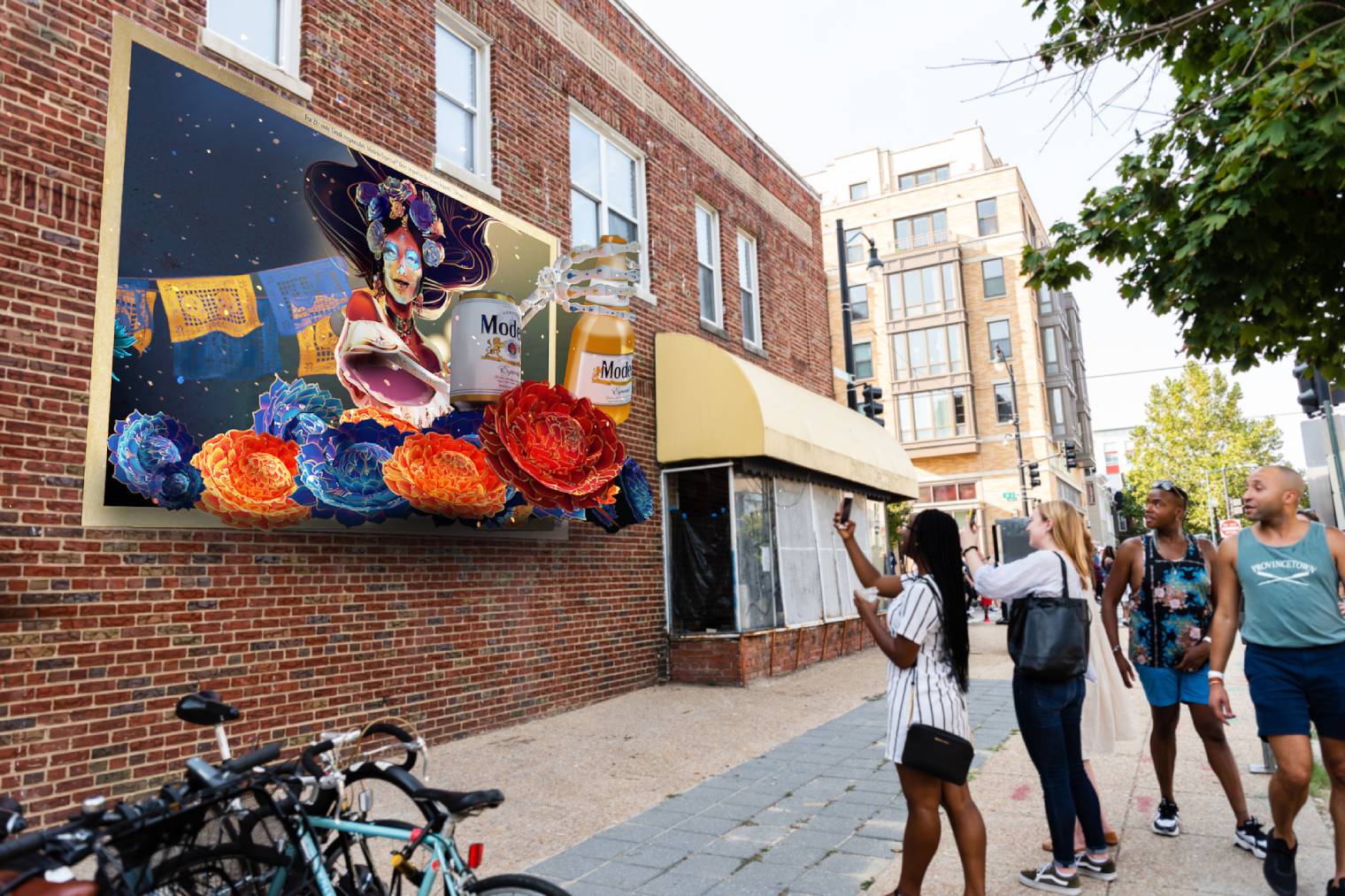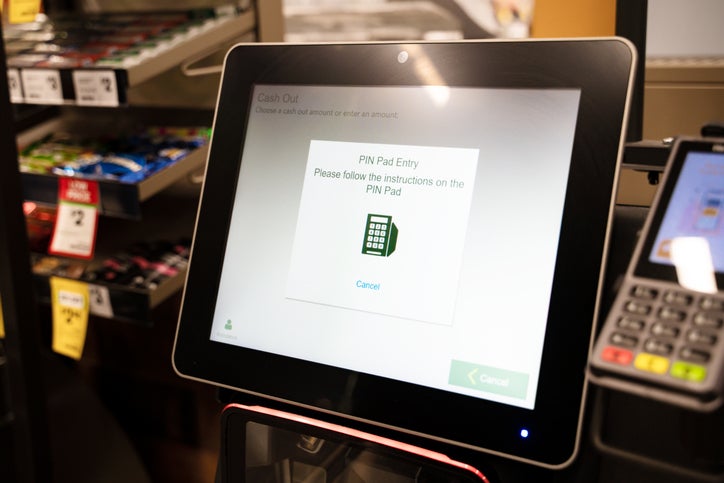
Augmented reality (AR) technology, which allows the user to see the real world overlaid with digital data, could completely change the world of retail.
While consumer adoption of AR has so far been underwhelming, steady investment in AR and the metaverse concept suggests that Big Tech still sees potential in the technology. In fact, it’s likely the retail stage is where many will come across the enterprise metaverse, where extended realities are utilised primarily for business use and customer engagement.
As GlobalData reports, the retail industry is evolving at a rapid rate, and the retailers which emerge as winners in the near future will be those that offer a truly omnichannel experience. Here AR can be a useful tool for retailers, merging the physical with the virtual and adapting to the new retail model.
From warehouses to ecommerce sites and stores, AR can be used by retailers to address some of the challenges they face today. AR is also useful when visiting a physical store isn’t possible.
The pandemic has given retailers the opportunity to see the value that AR can create, with examples including Ikea, Walmart, Alibaba, Amazon and more. Giving customers the ability to visualise products in their own homes was a lifeline during lockdown for furniture companies and cosmetics retailers whose stores were closed during nation-wide lockdowns.
It’s not just physical stores getting in on the AR action, though. Amazon for example has worked with Groove Jones, noted in a recent GlobalData report as one of the leading specialist AR vendors in retail. Headquartered in Dallas, Texas, the creative technology studio has worked with the likes of Corona Extra, Toyota, IBM, ExxonMobil and Volkswagen on extended reality (XR) campaigns and programs.
How well do you really know your competitors?
Access the most comprehensive Company Profiles on the market, powered by GlobalData. Save hours of research. Gain competitive edge.

Thank you!
Your download email will arrive shortly
Not ready to buy yet? Download a free sample
We are confident about the unique quality of our Company Profiles. However, we want you to make the most beneficial decision for your business, so we offer a free sample that you can download by submitting the below form
By GlobalData“AR is the perfect component for an interactive, digital campaign,” says Dan Ferguson, co-founder & partner at Groove Jones. “It is extremely helpful as a no-touch or low-touch engagement. Creating no-touch yet highly engaging and buzzworthy experiences will be a core principle going forward in 2022.”
“Many of these end up in the retail aisle at Walmart, 7-Eleven, H.E.B. Grocery, or in OOH campaigns to drive traffic to retail,” Ferguson tells Verdict.
AR in retail campaigns
In one such out-of-home campaign for the beer Modelo, Groove Jones worked with Constellation Brands US to bring a mural to life through the power of AR.
The AR experience depicted traditional Dia de Los Muertos imagery with marigolds, candles and an animated depiction of the La Catrina idol.
“All you need is your phone to activate the experience,” explains Ferguson. “When you scanned the mural or point of sale pieces, the artwork would come to life, activating a 3D animation of the candy skulled-woman handing you a cold Modelo bottle of beer.”
The campaign ran for two months, securing an 16.5% increase in sales in the markets where the campaign ran for the client, along with 7.2 million earned media impressions.
For an in-store example of the power of AR in retail, Ferguson points to a product launch for US golfing brand Callaway Golf.
“AR was integrated to support the product launch in over 1,200 stores where golfers shop; in-store signage and promotions were part of the product release. We utilized QR-Codes and messaging at various touchpoints in the store.
“The AR experience used animation to display the driver with four interactive ‘hot spots’ that can be activated by tapping on them. When tapped, an animation helps visualize the interior of the driver’s head and gives the customer a view of the A.I. designed features.
“The customer has controls to rotate, flip and take photos of the driver’s head. In addition to the AR visualization portion of the experience, we included a Product Selector link to help the customer find the right club for them. We also integrated product videos for customers who are interested in learning more, all of which can be accessed through the AR experience.”
Away from sports and drink brands, it’s the beauty industry which is arguably leading the way on AR in retail, with many users combining AR with artificial intelligence (AI).
L’Oréal’s augmented reality (AR) brand ModiFace, for example, offers tools to help both online and offline customers find the right product for their particular skin and hair requirements.
In-store screens double as digital makeup mirrors, using AR to apply various shades in real-time. This is made possible by AI-powered analysis of data provided by makeup brands and L’Oréal’s photo database of 6,000 clinical images.
The future of retail AR
The future of AR in retail will rely on mainstream adoption. If it happens, it will only come once vendors can change the public perception in favour of AR, and tackle issues like high price, bulky design, and security. These are the same factors which make full deployment of gaming metaverses or a business metaverse unlikely in the short term.
For the foreseeable future, mobile will be the preferred device for consumers to access AR experiences. Away from the consumer market, many industries, including retail, are assessing AR use cases. But there is still no killer use case for AR in the retail sector, it will likely come as and when AR smart glasses become widely adopted.
In the short-term, GlobalData argues, retailers should focus their investments on developing mobile-based AR, such as 3D product visualisation, and store-based AR experiences such as L’Oréal’s and Callaway Golf.
Not that store-based experiences need to be mere “magic mirrors” of sorts. The future could see more innovative uses of AR in retail as the tech and the metaverse evolves.
Product strategist for London creative tech studio Rehab Takunda Chikuku told Verdict last year that consumers are starting to care more and more about sustainable development and demanding transparency and accountability in the production of their goods. Here AR may make an interesting proposition.
“AR unlocks a richer picture into the production of consumer packaged goods with users being able to see that data visualised beyond numbers, right down to multimedia of the exact farming region producing this batch of cocoa beans.
“This could be implemented through the retailer’s shopping app, or at a brand or industry body level with QR codes leading to progressive web app experiences,” says Chikuku.
“On a retailer or industry standard level using computer vision we could enable the shopper to scan the entire aisle using their phone’s camera and see which is the most sustainable, giving them another dimension to make purchase decisions beyond price or brand.”
Chikuku believes some “data design magic” from studios like Rehab can put into tangible context the impact and value produced by the item customers are considering purchasing which can “drive powerful shifts in consumer choices”.
“We all know how many zeroes are in a million pounds but seeing it visually stacked quickly unlocks a whole new understanding and juxtaposing the value received and environmental impact of each stakeholder, consumers can make informed purchasing decisions on the spot not influenced by advertising but cold hard data.”
And a little augmented visual flair, of course. Find out more in the AR in Retail report from GlobalData.







